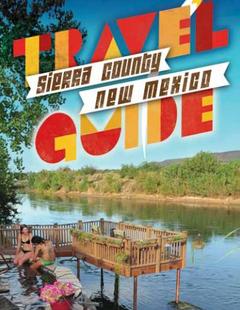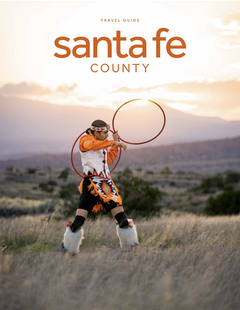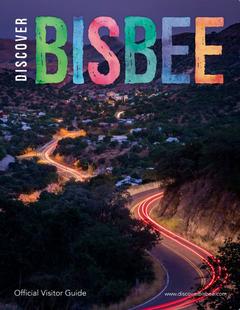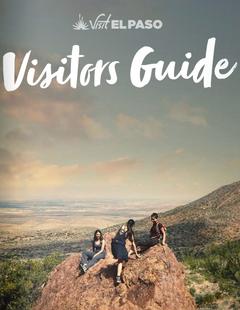Contact Info
Basics
- Location:
- Downtown Artesia
- Type:
- Art Gallery-Museum,
City Park-Neighborhood,
Historical Site
Description
Travel through the past and experience Artesia through the eyes of the pioneers and settlers of the southwest as you take the Walking Tour at your leisure. Even if you aren't a history buff, you and your family will enjoy the sights and sounds of this historic community, appreciating the hard work of those who came before us.
The Walking Tour begins at with the Train Depot & Artesia's Vistior's Center. It procedes through town, stopping at each of the History in Bronze monuments.
Hours + Fees
Season:
Details
Additional Details:
About the Bronze Monuments
The Cattle Drive - The Trail Boss at First and Main Streets is a monumental bronze sculpture that was unveiled in March 2007 as the first in a series of three sculptures called The Cattle Drive. The series is designed to represent and honor the development of the ranching industry in southeastern New Mexico in the late 1800s. The three sculptures feature three personalities common in the Pecos Valley during the Cattle Drive era – the Trail Boss, the owner of a small herd of cattle; the Vaquero, a cowboy; and the Cattle Rustler, a cowboy who makes his living stealing cows.
The Vaquero, installed on the corner of Second and Main Streets in May 2008, was created by Mike Hamby. The Rustler is planned for installation in Spring 2009 in the intersection of Second and Texas, one block north of Main. All three are built at 125% life size.
The Cattle drive sculptors are Vic Payne, The Trail Boss; Mike Hamby, The Vaquero; and Robert Summers, The Rustler.
First Lady of Artesia Monument - The first of the History in Bronze sculptures was unveiled on July 26, 2003 to honor the spirit of a pioneer woman, Sallie Chisum. The niece of famed cattleman John Chisum, Sallie settled in Artesia in 1890 where her ambition and fierce independence led her into many endeavors. She was one of the first traders in the real estate market in Artesia, established and operated Artesia’s first post office with her second husband, and, after a second divorce, ran a boarding house for railroad immigrants and travelers. She was a businesswoman, caregiver to the sick, and a companion to children. although her own children were taken by their father to Europe. Her accomplishments as an entrepreneur, developer and woman led her to be known posthumously as First Lady of Artesia. She left Artesia in 1919, and died in Roswell, New Mexico, in 1934.
Derrick Floor & Oilfield Pioneer Monuments - The Derrick Floor is a bronze artistic representation of a four-man crew on a drilling rig. The drilling rig is a 100 percent life-size sculpture while the four men in the crew are 125 percent life size, emphasizing the men who built the oil patch. The Derrick Floor was dedicated on April 24, 2004 “to the men and women who take the risks and do the work to find, produce and refine New Mexico oil and gas.”
Partners – Mack Chase and Johnny Gray are captured leaning on the hood of a pick-up, typical of the way in which they made most of their deals. After meeting up in the Artesia-area oil patch, the two decided to go into business together in 1972. Their oil and gas operating company was a growing success for 20 years, reaching a production level of 2,700 barrels of oil per day. In 1992, Chase and Gray opted to dissolve the business partnership to pursue individual business interests. In 2005, both companies were among the top 10 oil producers working in New Mexico. Johnny Gray died in 2001. His children maintain his business. Mack Chase continues to operate his business.
Pioneering Endurance – Born in 1880, Van Stratton Welch was already considered a pioneer in oilfield drilling before he ventured to New Mexico in 1923. He became part of the partnership – Flynn Welch Yates – that drilled the Illinois #3, making history and signaling the beginning of a very successful oilfield industry in southeastern New Mexico. Mr. Welch settled with his family in Artesia where he continued to explore in New Mexico and elsewhere until his death in 1969.
Woman''s Intuition – Martin Yates was part of the partnership that was responsible for the Illinois #3. The oil sand, or “pay,” was drilled into on April 9, 1924, after two unsuccessful attempts. Geologist V. H. McNutt, after the two failures, would not specify a third site. The decision was passed on to Martin, who, in turn, elected for a woman’s intuition, asking his wife, Mary, to pick the site, and she did. The rest is history. Mr. and Mrs. Yates died in the late 1940s. Their children and grandchildren still run the company that grew out of the 1924 pay. Since 1924, Southeast New Mexico has produced approximately 3.9 billion barrels of oil and 20.9 trillion cubic feet of natural gas out of tens of thousands of wells.

























